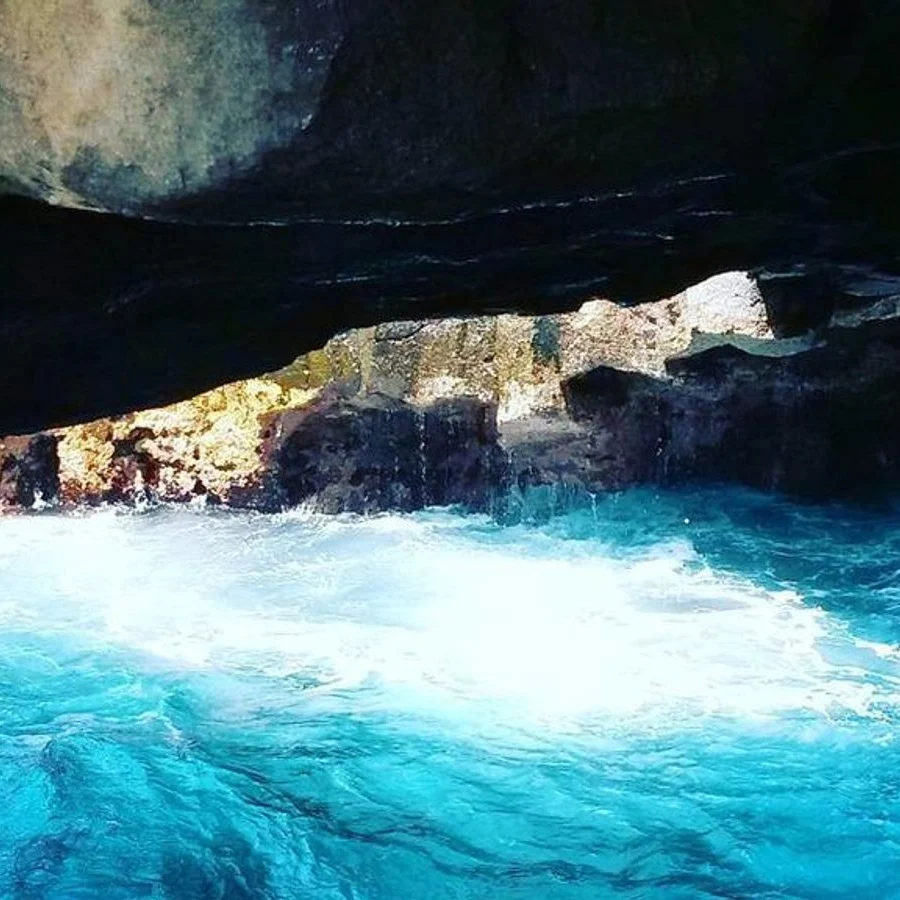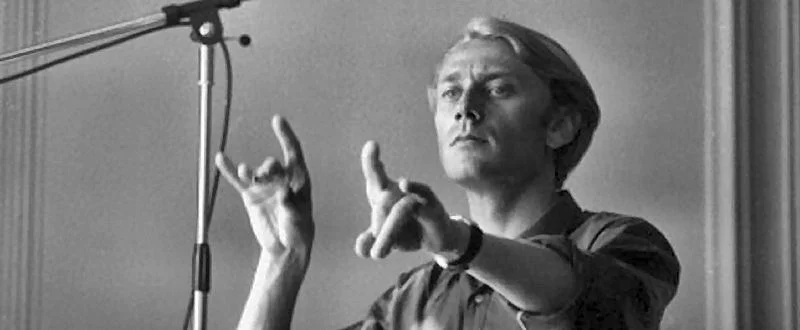Trapped in Los Camarones: The Haunting Final Dive of François de Roubaix


| Incident Location | Diver Full Names (Deceased) |
|---|---|
| Spain, Canary Islands, Palm-Mar, Los Camarones Cave | François de Roubaix, Juan José Bentes Castilla |
Off the coast of Los Cristianos, Tenerife, lies a captivating yet deadly dive site known as Los Camarones. Its underwater cave system has a long-standing reputation for danger. Forty-five years ago, this site fatally trapped two experienced divers, and nearly a decade later, buried two more. This is the haunting story of the Los Camarones disasters.
The Life of François de Roubaix

A Childhood of Art and Curiosity
François de Roubaix was born on April 3, 1939, just weeks before the Second World War began. His father, Paul de Roubaix, was a film producer; his mother, Mimi Indélé, was a painter and cartoonist. Though he was an average student, François showed an early talent for drawing.
At the age of fifteen, his grandmother gave him a harmonica. This simple gift led to a lifelong passion for music, which he developed alongside another love introduced by his mother: the sea.
Discovering the Sea
During holidays in Toulon and Saint-Raphaël, François began exploring underwater fishing. In the early 1950s, his family purchased a property in Corsica. It would become his sanctuary, a place to escape, reflect, and later, dive.
Music and the Ocean: Two Passions
A Decade of Musical Innovation
Between 1965 and 1975, François enjoyed a prolific music career. He composed for television, commercials, short films, and around thirty feature-length films. His music was celebrated for its inventiveness and emotional depth.
Diving as a Way of Life
Whenever possible, François broke away from his studio to immerse himself in nature. He was a passionate scuba diver, frequently venturing into oceans around the world. He often brought back underwater photographs and had plans to publish a book on night diving. Equipped with professional diving gear, including a diving mask, diving suit, diving tanks, and diving computer, François explored marine landscapes few others dared to enter.
The Bond Between François and Juan José Benítez Castilla
A Diver’s Spirit
Juan José Benítez Castilla was a 29-year-old diving champion from the Canary Islands. A national diving instructor and multiple-time champion of Spain and the Canary Islands, Juan was not only experienced but deeply connected to the sea.
In 1971, he moved to Los Cristianos and established an immersion club. He became well known locally for his work as an underwater photographer and as a staunch defender of marine life.
He often said he would never work in an office, insisting he was a free being who loved only nature and the sea.
Shared Love of the Ocean
François and Juan formed a strong friendship based on their mutual passion for diving. Their bond was strengthened by shared dives and a deep appreciation for the natural world beneath the waves.
November 20, 1975: The Fatal Dive
Arrival in the Canary Islands
François arrived in the Canary Islands on November 16, 1975, accompanied by his partner Rosario and their infant son, Benjamin. He was familiar with the Los Camarones cave, having visited it previously for underwater photography as part of the book he was preparing.
Preparing for the Dive
On the night of November 20, François and Juan set out for a dive at Los Camarones. Also on the boat were Rosario, Benjamin, and a local captain. After a short 700-meter boat ride from the coast of El Palmar, they anchored near the fish farms.
Wearing full diving gear, François and Juan descended to a depth of 33 meters. There, they passed the statue of Our Lady of Carmen, which stands on the seabed and is said to bless those who dive in the Tenerife Sea.
Inside Los Camarones Cave
A Treacherous Environment
Los Camarones is considered one of the most dangerous underwater caves in the region. Although 60 to 100 divers visit the site daily, very few enter the cave itself. Even divers with full cave certifications are often discouraged from exploring its interior.
Most local dive shops avoid entering the cave. Their dive masters are not trained in cave diving and are tasked with guiding groups in safer areas outside the cave. The interior of Los Camarones is deceptive—appearing simple but hiding many dangers.
Structural Hazards
Unlike caves near the coast, Los Camarones offers no trapped air pockets. The biggest danger lies in the thick layer of sediment on the floor. A single misplaced fin kick or the sudden movement of fish alerted by diving lights can trigger a silt-out, creating zero visibility conditions that last for hours.
Even experienced divers hesitate to enter more than 10 meters without a guide line. Once disoriented, it is nearly impossible to find the exit.
Cave Layout Overview
The cave entrance lies at 33 meters depth and is approximately four meters high. Inside, two primary branches are connected by a short tunnel. Depending on sand movement, the tunnel can be extremely narrow.
The right-hand branch descends to 24 meters and twists in a U-shape, becoming increasingly tight. Sometimes, divers leave a guideline, but these often hang from the ceiling and can tangle with valves or gear.
Mistakes and Misfortune
A Dive Without Proper Planning
François and Juan entered the cave with no safety equipment beyond their standard diving gear. They did not lay a guideline. Their air tanks were only filled for a 30-minute dive, and they had no spare diving tanks on hand in case of emergency.
They took several photographs inside, including close-ups, but the situation quickly deteriorated. A sudden silt-out clouded the entire cave, eliminating all visibility. Disoriented and without a guide line, they circled helplessly, unable to locate the exit.
A leading theory suggests that a giant stingray, disturbed by the divers’ presence, stirred up the sediment.
Witness Accounts and the Search for the Divers
A Family Left Waiting
According to Benjamin de Roubaix’s biography, he was present on the boat that day with his mother. He was only six and a half months old at the time.
“I was with my mother on the diving boat that day. I was just six and a half months old. I have no memory of it, but I sometimes imagine the Tenerife Bay, the shimmering sea, the late afternoon sun, and the captain saying, ‘There is no more air in the canisters. They should have come back up.’”
Delayed Recovery
Rescue teams arrived that same evening, but the suspended sand inside the cave made it too dangerous to proceed. The Guardia Civil’s specialized underwater unit, GEAS, had to postpone recovery until the following morning.
According to the official report, François and Juan’s bodies showed bruises and scratches, evidence of their struggle to escape. Some accounts suggest that Juan, in an act of self-sacrifice, gave François his own air supply.
A Hero Remembered
Sacrifice and Loyalty
María Elder, Juan’s widow, later said:
“Juan would give his life for any student. But for François, even more. I believe he reached the surface, saw François wasn’t coming, and went back in to save him. Neither survived.”
Lasting Impact
François’s death shocked the artistic community, particularly in France, where he was seen as a pioneering composer. He was buried in the cemetery of Arona, on the Spanish island of Tenerife.
Juan was also buried in the Canary Islands, though the exact location remains unknown. Friends and fellow divers referred to him as a hero.
Commemoration and Legacy
Honoring the Fallen
On April 26, 1984, nine years after the accident, a tribute was held at the Auditorio Infanta Leonor de Los Cristianos. During the ceremony, the Counselor for Culture of Arona, Pedro Negrín Díaz, presented a commemorative plaque to Juan’s family, accepted by his grandson.
Attendees remembered Juan not only as a skilled diver, but as a courageous man whose final act was one of friendship and sacrifice.
